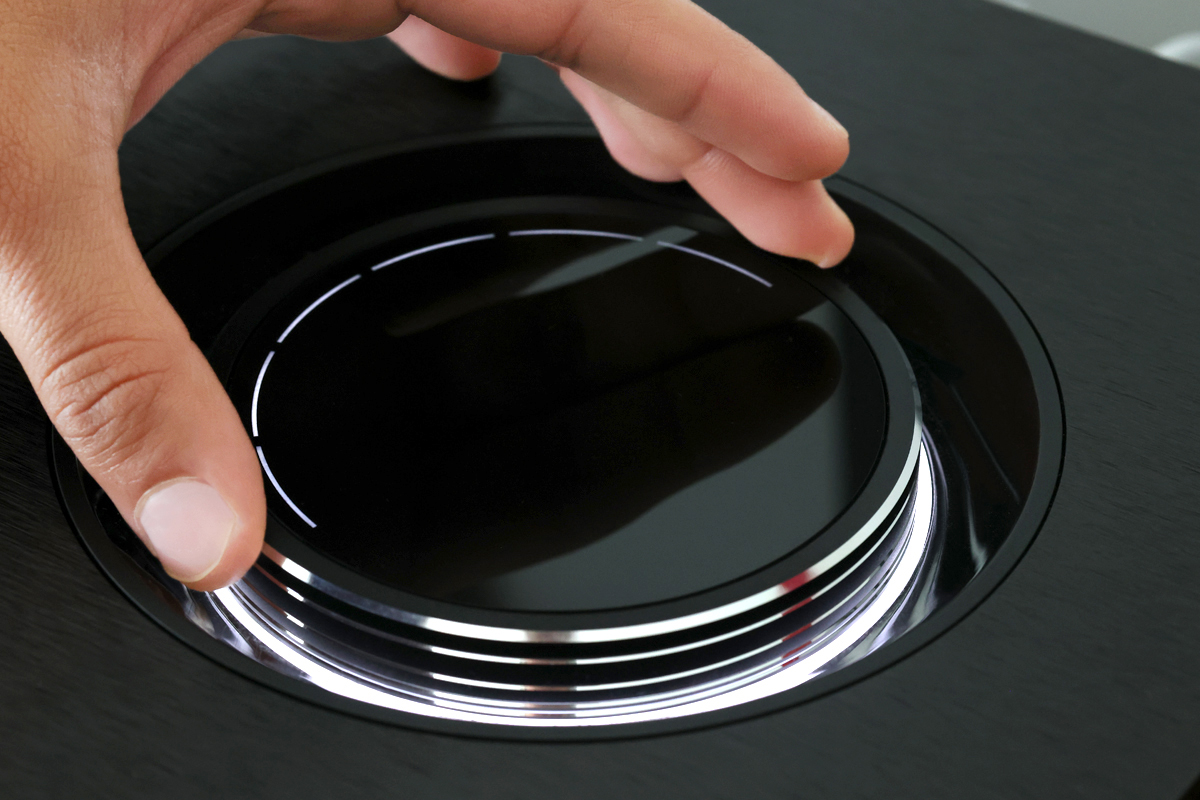Note: for the full suite of measurements from the SoundStage! Audio-Electronics Lab, click this link.
Few audio brands are as steeped in tradition as Naim Audio. In my mind, companies like McIntosh, Bryston, and Naim, along with a few others, conjure up memories from my early years as an audiophile of coveted but unattainable audio products. In February last year, fellow SoundStage! Network reviewer Jonathan Gorse wrote about his experience with the original Nait integrated amplifier and his introduction to the Naim brand almost 40 years ago. I was reintroduced to the brand ten years ago when the Naim Statement NAC S1 preamplifier and NAP S1 mono power amplifier made their debut at the annual CES (Consumer Electronics Show) in Las Vegas.
I still remember that demo, in a large suite at the Venetian hotel, how deeply impressed I was by the Statement system’s ability to drive a massive pair of Focal Stella Utopia loudspeakers with perfect ease. I was also completely taken with the performance of the company’s Supernait 3 integrated amplifier, which I reviewed six years later, even though it costs about 50 times less than the Statement system. It had the bold, dynamic sound that I have since come to associate with Naim products; and while not as luxurious as the Statements, it was still built to a very high standard and exhibited amazing craftsmanship.
In recent years, Naim has branched out with the Mu-so wireless speaker system and the Uniti range of streaming integrated amplifiers. The original Uniti, introduced in 2009, consisted of a Nait 5i integrated amplifier, a built-in CD player, a tuner, an iPod interface, plus a network streamer with UPnP and internet radio functions. More recently, the styling of Uniti models have departed from that of Naim’s Classic components to become even more stylish, combining the compactness of the original Nait with some design flourishes of the Statements. The Uniti line is made up of premium components, commanding a premium price, that have garnered many positive reviews, including one for the Uniti Atom, here at SoundStage! Simplifi. Naim has now expanded their offerings with the Uniti Nova PE, the subject of this review. This new model is essentially a higher-power version of the existing Uniti Nova (PE stands for Power Edition).
Styling, design, and connections
At $9999 (prices in USD), the Naim Uniti Nova PE may seem expensive for a streaming amplifier, but from up close, it does look and feel like a $10K component. It brought to mind the large, luxurious, illuminated volume knob on the top of the Statement NAC S1 preamplifier and the Naim logo etched into its clear acrylic accents, the beautifully sculpted heatsinks built into the sides of the NAP S1 power amplifier, the extreme attention to detail in the engineering and manufacturing of both components. I remember thinking that $200,000, the price of the full Statement system at the time, was an insane amount of money; but if I were to spend $200,000 on amplification, that’s what I would probably spend it on.
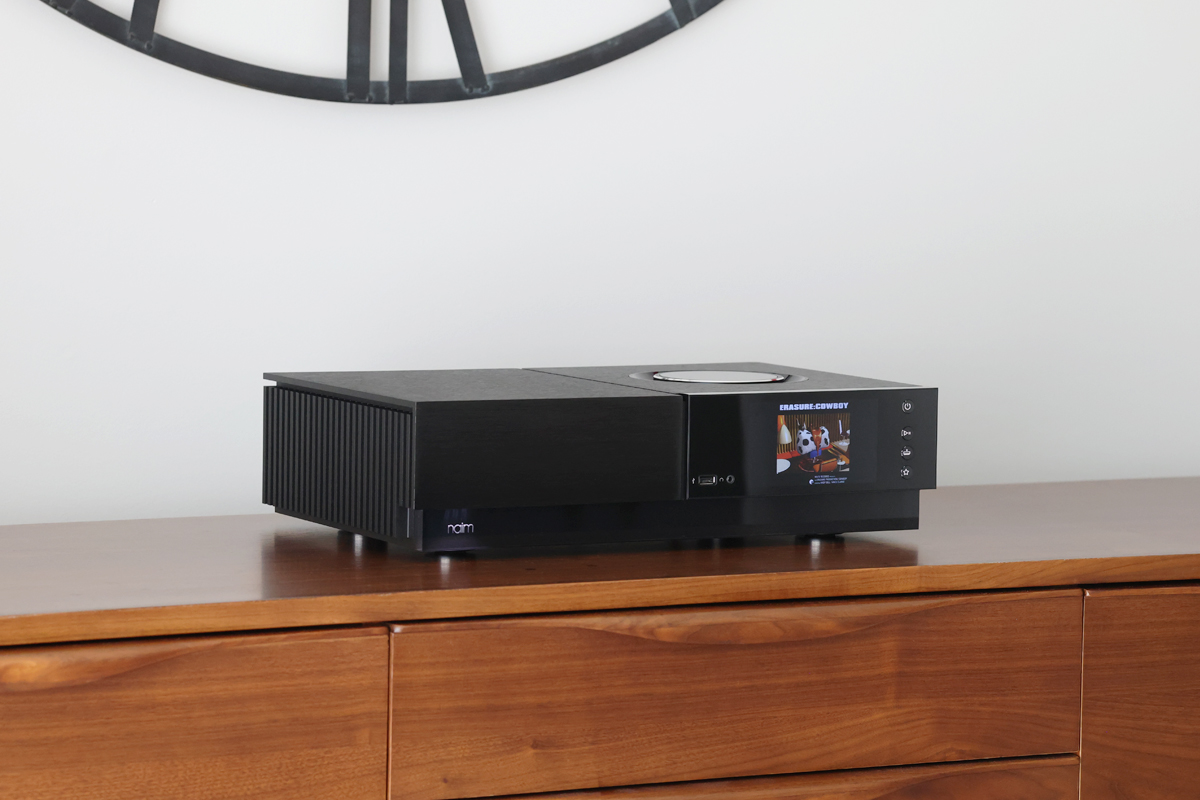
The Uniti Star, Nova, and Nova PE streaming amplifiers look as though formed by the coupling of the tops of the Statement preamplifier and power amplifier. The construction is brick-like. The panels feel incredibly dense, and the side-mounted heatsinks add rigidity to the chassis, and a touch of ruggedness, though they lack the panache of the sculpted heatsinks of the NAP S1. The Uniti Nova PE, as the other Uniti models, just oozes class and luxury. It carries a respectable five-year warranty, as befits a product of its caliber.
The Nova PE is relatively small and svelte, measuring 4.3″H × 16.9″W × 10.4″D. And when I say it’s brick-like, I’m not kidding: it weighs 33.3 pounds! Unlike its Uniti brethren and most other Naim amplifiers, it is based on class-D amplifier topology, not class AB. It has claimed power ratings of 150Wpc into 8 ohms or 250Wpc into 4 ohms, both at 0.1% THD+N.
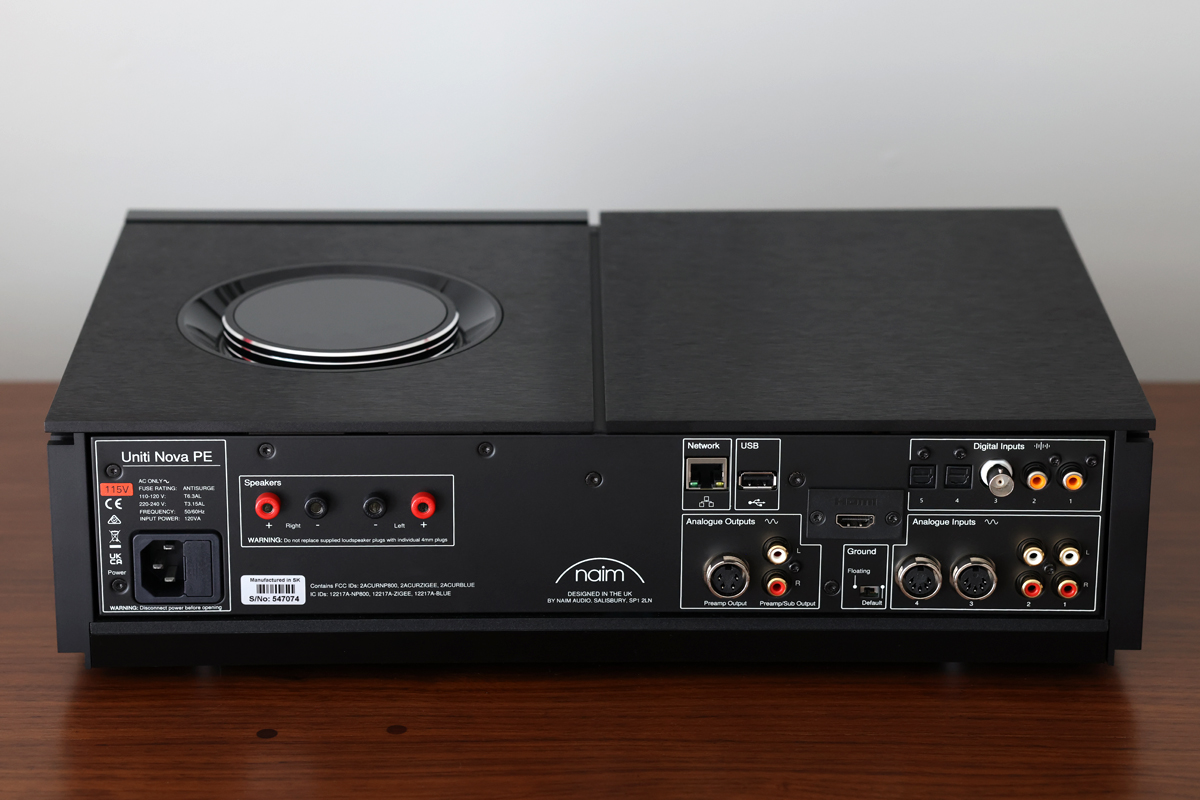
Naim has collaborated with Denmark’s Purifi Audio on implementing its Eigentakt amplifier modules in the Nova PE. The Purifi modules are fed by a linear power supply and a large transformer; a separate switched-mode power supply is used for the Nova PE’s digital section. Like other high-end brands that utilize Purifi’s Eigentakt technology, Naim assembles the amplifier modules in-house to ensure they meet the company’s build-quality standards, and integrates them into the main circuit board to avoid additional connections and simplify the signal path.
The Uniti Nova PE’s digital section is centered around a Burr-Brown PCM1791A DAC chip and Naim’s own NP800 streaming module. Network connectivity is available with either ethernet 10/100Mbps or Wi-Fi (up to Wi-Fi 5); the Wi-Fi antennas are built into the heatsinks. The Nova PE supports four lossless codecs—WAV, up to 32-bit/384kHz; FLAC, AIFF, and ALAC, up to 24-bit/384kHz—and accepts DSD, up to 5.6MHz, from DSF and DFF files. It is compatible with MP3, AAC, OGG, and WMA and offers gapless playback with all formats. The Nova PE is Roon Ready and supports all major streaming protocols, including Apple AirPlay 2, Google Chromecast, Spotify Connect, Tidal Connect, and UPnP. The companion Focal & Naim app, available for iOS and Android, provides access to Qobuz and Tidal, as well as vTuner internet radio. Bluetooth connectivity is also offered, with support for Qualcomm’s aptX Adaptive codec.
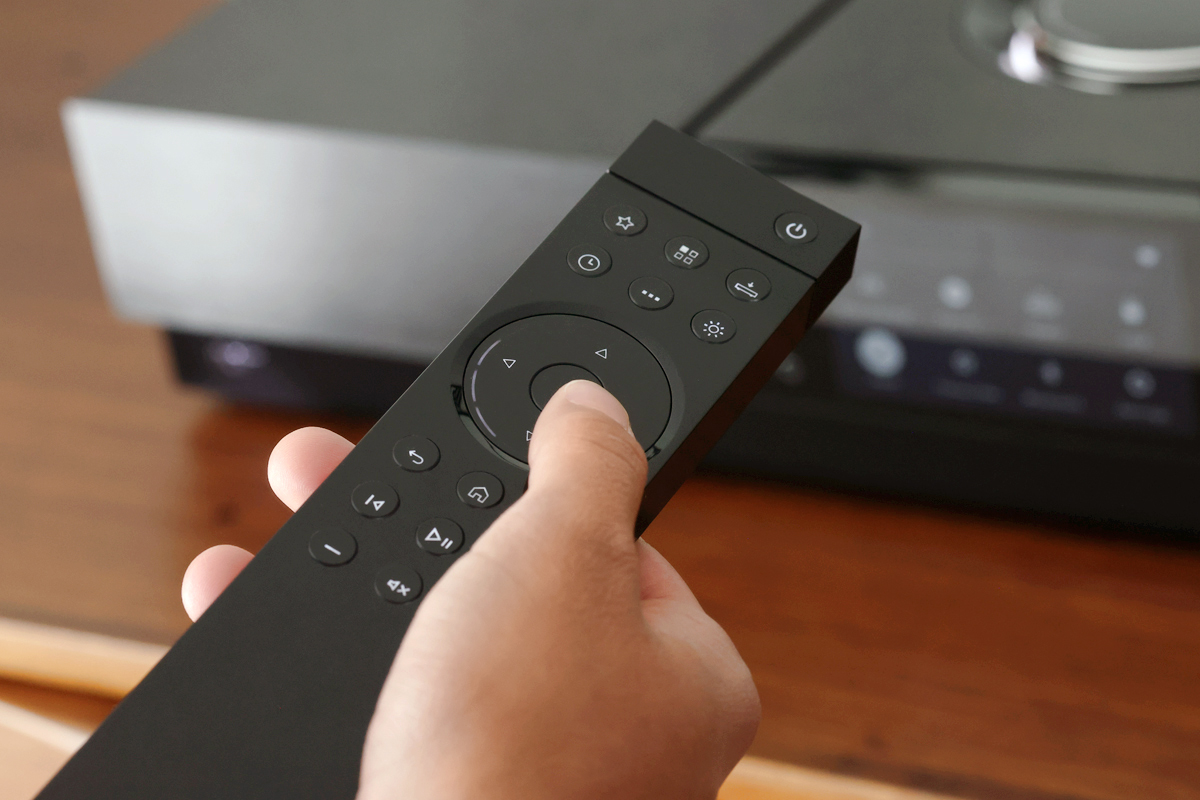
The Focal & Naim app connects to and controls compatible Naim devices and allows multiroom streaming. Naim’s stylish Zigbee RF bi-directional remote control (provided) can also be used to control the Nova PE. A column of four buttons alongside the 5″ color display, on the right side (the “preamplifier part”) of the front panel, offers basic control functionality too: power/standby, play/pause, source selection, and the saving and selection of favorites.
Near the center on the right side is a USB-A port, which allows playback of local files from an external storage device. A 3.5mm headphone output is next to it. Centered atop the right part of the unit is the large, illuminated volume dial, as mentioned. It is absolutely gorgeous and has such satisfying feel it made me want to get up out of my seat just to change the volume level.
At the bottom left of the front of the unit is a thick acrylic insert etched with the Naim logo, which is illuminated from above, a chic visual accent. The overall effect of the brushed black finish, softly glowing illumination, and beautiful color display makes the Nova PE the classiest-looking audio component I have had in my system.
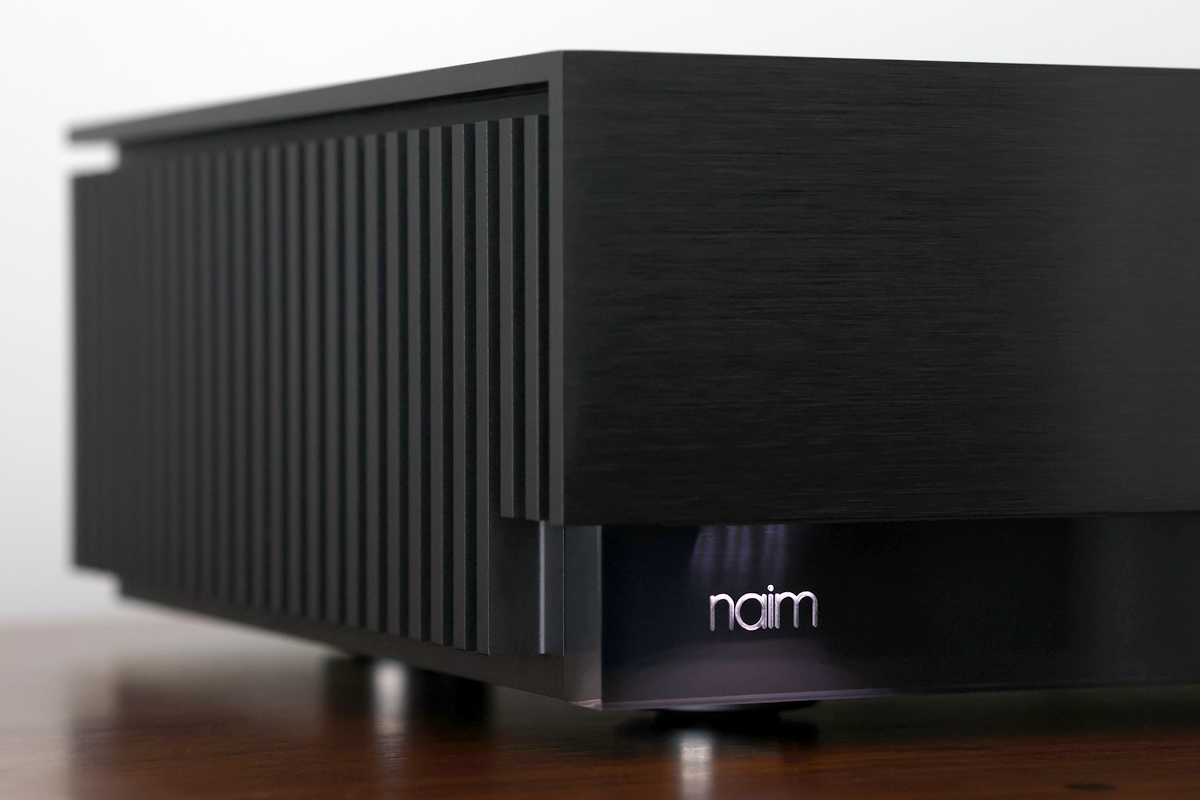
The Nova PE’s connections are clustered on the right side of the rear panel. Its digital inputs comprise two optical (TosLink), three coaxial (two RCA, one BNC), and one HDMI ARC, for connection to a television. There are two pairs of RCA line-level analog inputs and two five-pin DIN inputs. Line-level outputs include a pair of RCA connectors (labeled Preamp Sub Output) and a four-pin DIN connector (labeled Preamp Output). A USB-A connector is available on the back panel, too, for connection to an external storage device. Also at the rear on the right is the ethernet port and a switch to change the grounding from default (earth ground) to floating (isolated from earth). The left side of the rear panel has a standard IEC power inlet and a set of speaker outputs, which are compatible with conventional banana plugs or with Naim’s dual banana plug.
Setting up a Nova
I plugged a network cable from my router into the Uniti Nova PE’s ethernet port and installed the Naim & Focal app on my Samsung Galaxy S21 smartphone. The app recognized the amplifier immediately, and I had control of its full functionality. Holding down the Home button on the remote while it’s near the amplifier pairs the two. This went without a hitch, but I rarely used the remote as it was much easier to just use the app or control the amp with Roon. I prefer to stream music to my system from a computer and used either an Intel NUC PC or a MacBook Air to stream from Tidal, and occasionally from my locally stored music library, via Roon.
My Uniti Nova PE sample spent most of its time as part of my main system, which usually consists of an Anthem STR preamplifier–DAC and a Lyngdorf Audio MXA-8400 power amplifier driving a pair of MartinLogan Masterpiece ESL 9 hybrid electrostatic loudspeakers and dual JL Audio E-Sub e112 powered subwoofers. I normally use the Anthem ARC room-correction system and bass management built into the STR. Accessories included Analysis Plus Chocolate speaker cables and Chocolate RCA interconnects (when I used an external power amplifier) and power products from Clarus, ESP, Zero Surge, and Blue Circle Audio.

As mentioned, I mainly used Roon to control the Uniti Nova PE. I did use the Naim & Focal app on occasion and found it stable and intuitive. I was able to easily switch between sources as well as to change the layout of the inputs and rename or disable them; set maximum volume levels; adjust balance, input trim, and lip sync; and carry out several other customizations. Overall, the Naim & Focal app is a fine alternative to third-party streaming software. Since bass management and room correction are not available with the Nova PE, I chose not to include my JL Audio subwoofers in the review system.
Sound of a Nova
Apart from its higher output power and different amplification topology, the Nova PE is largely identical to the “standard” Uniti Nova. I haven’t heard the lower-output Nova, but knowing what I know about Naim products, I suspect that it isn’t exactly hurting for power. And so I found it perplexing that Naim should produce what is essentially a higher-power version of the same product at a significantly higher price—45% more! It didn’t take long after I began listening for my reservations to fade away.

I first streamed Erasure’s cover of “Rapture (Extended Version),” from the newly remastered, expanded edition of the band’s 1997 album Cowboy (24-bit/44.1kHz FLAC, Mute Records / Tidal). With the Nova PE, this recording burst forth with thrilling power and clarity. The slowly rising and falling synth scales and harmonizing vocals that open the track floated dreamily before me, infusing me with tranquility. Then, the driving beat kicked in, and I knew that this was one serious amplifier. Vince Clarke’s slightly muted rapping vocals remained intelligible even when overlaid with the louder pulsating beat and female vocals. The Naim had no problem keeping the imaging nice and tidy while driving the ML speakers to high output levels with no perceptible distortion.
John Williams’s live recording with the Berlin Philharmonic of highlights from his prodigious output of movie soundtracks, John Williams: The Berlin Concert (24/192 FLAC, Deutsche Grammophon / Tidal), is the best sounding of three similar releases from DG. With the Naim, the full orchestra was right there in front of me on an expansive soundstage. The timpani hit hard with realistic impact, and although they were a little boomy at times, they did sound as I would expect them to sound live. I could easily make out the rolls of the snare drums on marches and the other percussion instruments in the many up-tempo pieces.
John Williams Live in Vienna (24/96 FLAC, Deutsche Grammophon / Tidal), which features a similar track list, was presented more narrowly. This might be attributable to the smaller acoustic space of the Musikverein, where this recording was made—the Berliner Philharmonie concert hall, where The Berlin Concert was recorded, is more modern and spacious. The most recent recording in this series is John Williams in Tokyo (24/96 FLAC, Deutsche Grammophon / Tidal). This recording tends to sound a little distant, and the Nova PE presented it more narrowly still, in the space between the speakers.
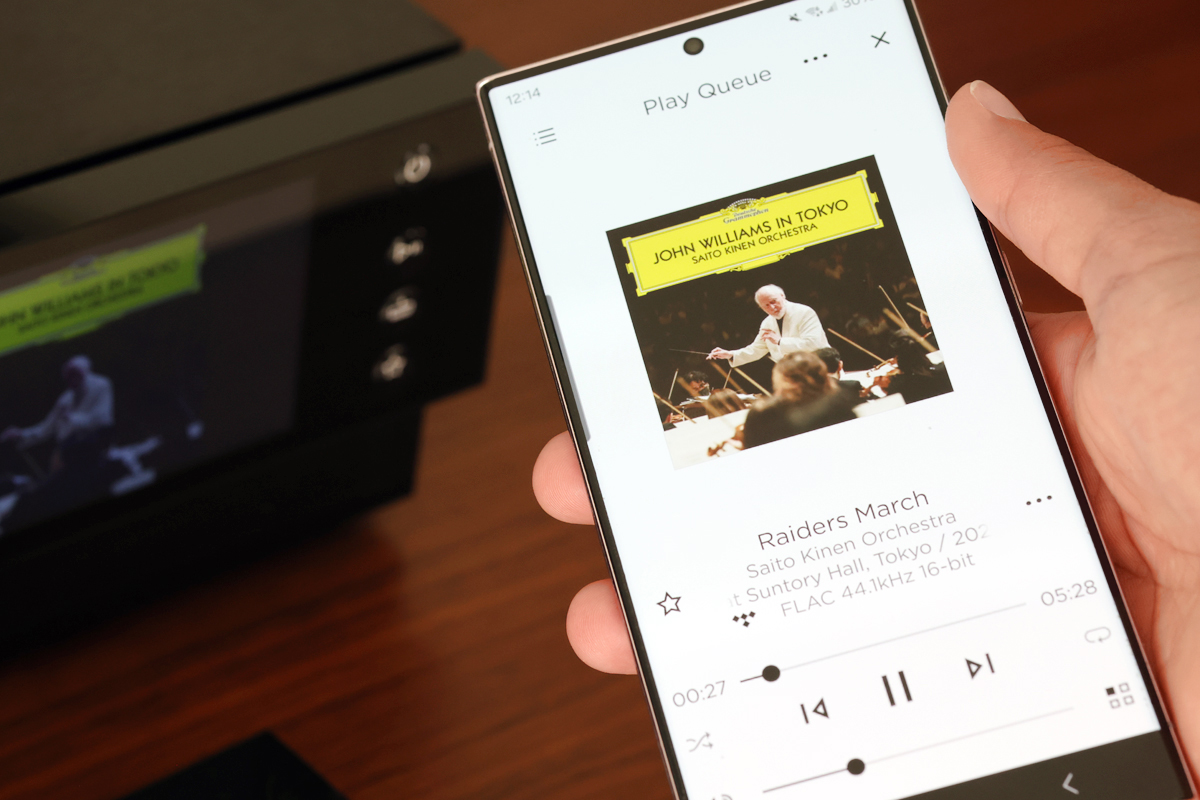
My main takeaway after this listening session was how adeptly the Naim presented the unique characteristics of each of these three recordings—how it allowed me to easily distinguish between them. I loved that.
While the Naim was fantastic at presenting big, bold recordings, whether they were orchestral pieces or pounding EDM tracks, it was also great with smaller ensembles, particularly vocal music, where its outstanding midrange purity and sparkling highs allowed it to convey great subtly and detail. On ZZ Top’s “La Grange,” from the expanded 2006 remaster of Tres Hombres (16/44.1 FLAC, Rhino-Warner / Tidal), I could clearly make out Billy Gibbons’s mumbled lyrics, which really get down and boogie when he starts wailing away on his Fender Stratocaster. The heavenly voice of the late Karen Carpenter on “Rainbow Connection,” from the 35th-anniversary edition of Carpenters Gold (16/44.1 FLAC, A&M Records / Tidal), was absolutely mesmerizing, emerging distortion-free from a dead-quiet black background, perfectly centered between the speakers.
Honorable mention—headphones
I’d be remiss if I didn’t mention the performance of the Uniti Nova PE with headphones. While serious headphone listeners will likely opt for a dedicated headphone amplifier, I found the sound of the Naim with headphone to be just as thrilling as it was with loudspeakers. Through a pair of HiFiMan HE400se planar-magnetic headphones, it sounded incredibly open and detailed. My reference Oppo Digital UDP-205 4K Ultra HD Blu-ray player (discontinued, $1299 when available) sounds tight and controlled through its excellent headphone output, but it wasn’t able to expand the sound as far and give recordings as much depth as the Naim did. This difference in the scale of presentation was most evident on my usual test track for headphones, “Desert Rose,” from the Deluxe release of Sting’s My Songs (24/44.1 FLAC, A&M-Interscope Records / Tidal). Other tracks also sounded better with the Naim, but in different ways.
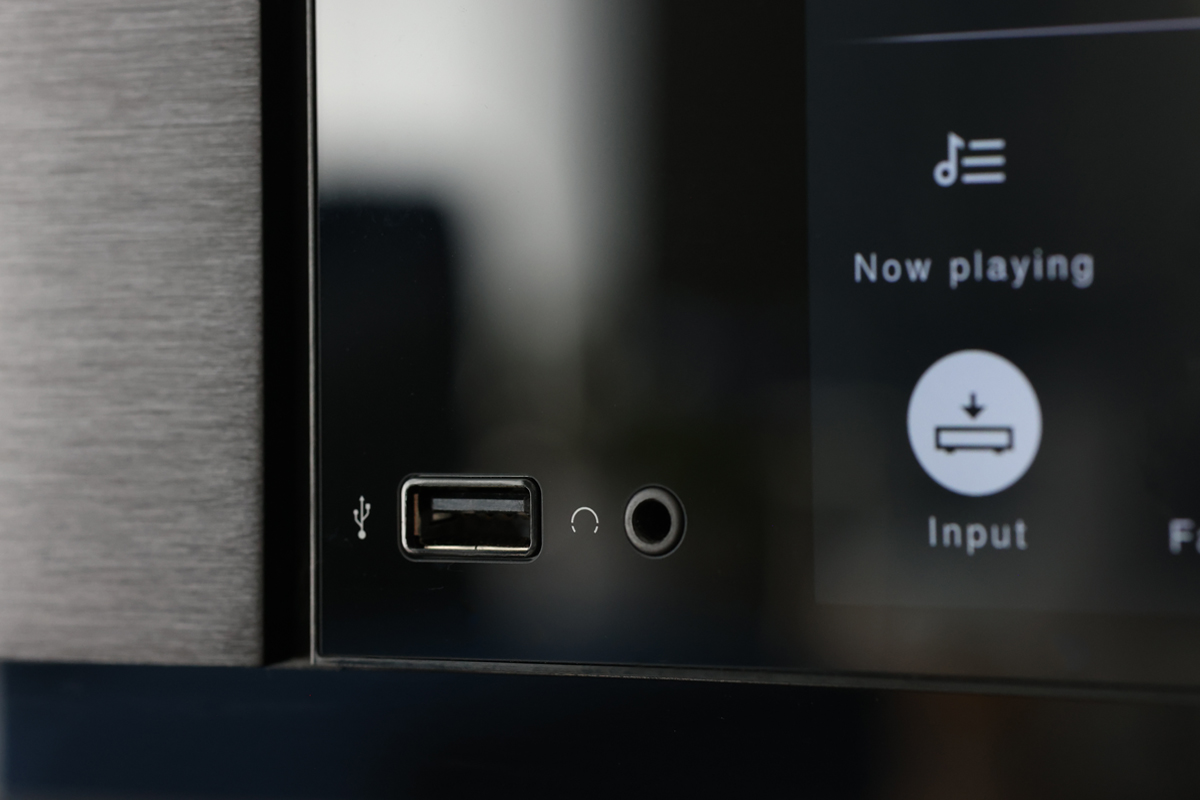
“Every Breath You Take” had exceptional clarity, which highlighted the subtle intonation in Sting’s vocals; “Fragile” was extraordinarily lush and liquid. Compared to my JDS Labs Atom headphone amplifier ($99), the Naim lacked some bass thump, which was most noticeable on Vanilla Ice’s “Ice Ice Baby (Too Cold for Christmas Mix)” single (16/44.1 FLAC, Holiday Classics Records / Tidal), but it was just as clean and clear. The sleigh bells sounded as though present in the room, at the plane of the loudspeakers slightly off to the right.
Comparing a Nova
It has been almost four years since I reviewed the NAD Masters M33 streaming integrated amplifier ($4999), but owing to its extensive feature set and exemplary performance—the M33, too, incorporates Purifi’s amplifier modules—it has since been my benchmark for assessing integrated amplifiers. I didn’t have an M33 sample on hand during my time with the Nova PE, and so I couldn’t compare the two directly; but I would guess that in terms of sound quality, they would probably be on par. While the NAD may be a tad quieter and more transparent, the Naim is probably ballsier and weightier, a bit like the Supernait 3 integrated. The differences, however, would likely be subtle at best. On the whole, I consider the M33 and the Uniti Nova PE the two best sounding, most richly featured integrated amplifiers of the many excellent integrated amps I have had in recent years.
Fortunately, I did have the Lyngdorf MXA-8400 multichannel power amplifier ($8999) on hand, against which I compared the Nova’s amplification performance. The MXA-8400 is powered by Lyngdorf’s proprietary PowerPerfect power supply and includes eight Purifi Eigentakt modules on a meticulously crafted circuit board. To my ears, the MXA-8400’s implementation of Eigentakt technology yielded a slightly better sound than even that of the NAD Masters M23 stereo/mono power amplifier ($3749), which also employs it.
Connecting the RCA preamp outputs of the Nova PE to the MXA-8400, to turn amplification duty over to the Lyngdorf, resulted in little difference in sound. The Lyngdorf’s greater power—it is rated at 200Wpc in two-channel mode, the Naim at 150Wpc—was not reflected perceptibly in the sound. Both amps were able to drive the ML ESL 9s with ease, allowing me to hear deep into recordings. Listening to AC/DC’s “Thunderstruck,” from The Razors Edge (24/96 FLAC, Columbia Records / Tidal), I had a sense of cavernous space around the kick drum. The drum kit on the title track of Back in Black (24/96 FLAC, Columbia Records / Tidal), recorded a decade earlier, sounded noticeably drier, deader. The Naim may have pushed Brian Johnson’s vocals and Angus Young’s incessant guitar licks slightly more forward on “Thunderstruck,” but otherwise, I could discern little difference between the two amps.
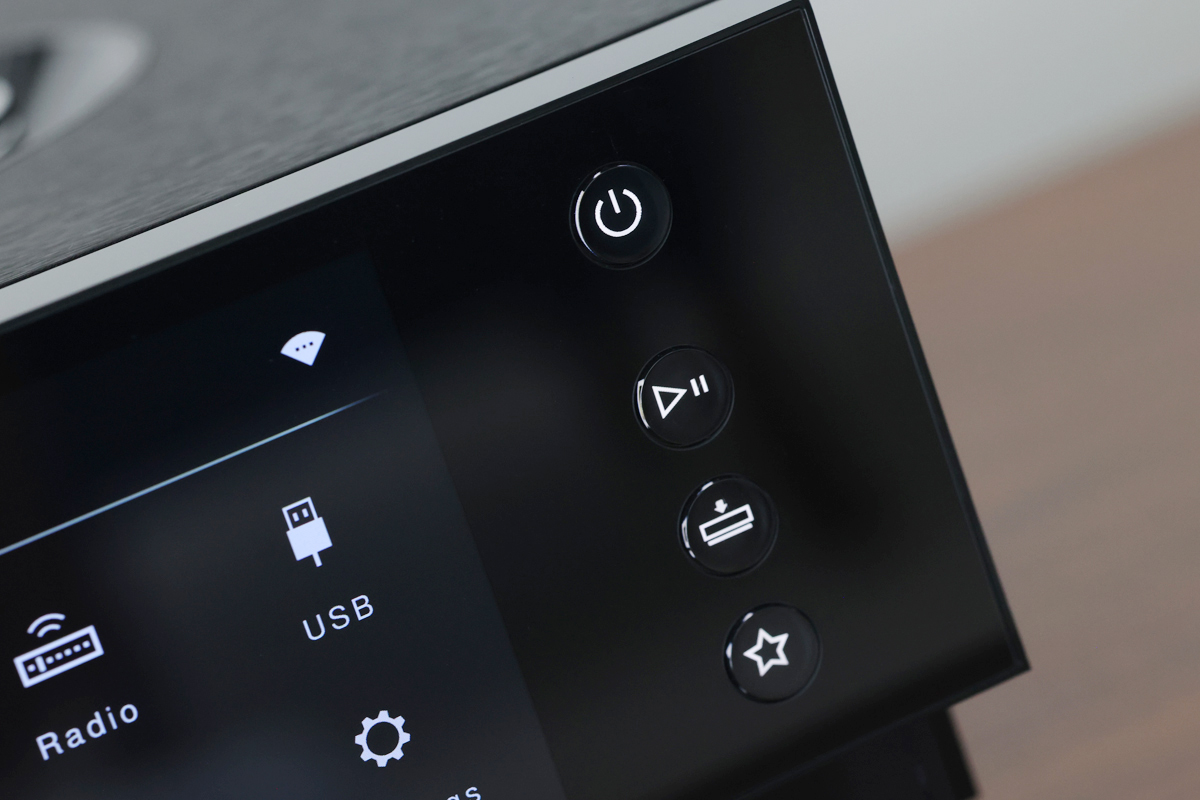
In the end, both amplifiers provided reference-quality sound with the ML ESL 9s, which require robust amplification to perform their best. I can’t imagine anyone not being totally satisfied with the performance of either of these amplifiers.
While the Uniti Nova PE has outstanding sound quality comparable to that of the class-leading NAD Masters M33, it costs twice as much. Granted, the Naim appears to be built more solidly than the NAD, and while some might prefer the more modern two-tone look of the NAD, I am partial to the Naim’s simple brushed black finish and illuminated accents. But I prefer NAD’s streaming platform, BluOS, over the Naim & Focal app. I find it easier to use. Moreover, BluOS is available for macOS and Windows as well as iOS and Android and is supported by many other manufacturers: PSB, DALI, Monitor Audio, Cyrus, and Peachtree Audio, among others. The M33’s inclusion of Dirac Live room correction gives it a significant advantage too. Still, the Uniti Nova PE sounded wonderful in my listening room, and I never wished it had room correction capability; but I am quite sure it would have sounded even better with it.
Conclusion
Despite its being near the expensive end of the price range for streaming amplifiers, I think that Naim has really hit the mark with the Uniti Nova PE. Discriminating buyers seeking luxury will appreciate the Nova PE’s state-of-the-art sound and capable streaming platform and its gorgeous, solid case that combines modern styling cues with the company’s distinctive, traditional aesthetics. It is the kind of audio product many would aspire to own (I do), but few have the budget for (I don’t). Those who do buy the Nova PE will find that its price is commensurate with its build quality and performance.
. . . Roger Kanno
Note: for the full suite of measurements from the SoundStage! Audio-Electronics Lab, click this link.
Associated Equipment
- Speakers: Martin Logan Masterpiece Classic ESL 9
- Preamplifiers: Anthem STR, NAD Masters M66
- Power amplifiers: Lyngdorf Audio MXA-8400, NAD Masters M23
- Digital sources: Intel NUC computer running Windows 11, Roon, and Tidal; Apple MacBook Air (M1) running macOS Sonoma, Roon, and Tidal; Samsung Galaxy S21 Android smartphone
- Speaker cables: Analysis Plus Chocolate Oval 12/2
- RCA interconnects: Analysis Plus Chocolate Oval-In
- Power cords: Clarus Cable Aqua, Essential Sound Products MusicCord-Pro ES
- Power conditioners: Blue Circle Audio PLC Thingee FX-2 with X0e low-frequency filter module, Zero Surge 1MOD15WI
Naim Audio Uniti Nova PE Streaming Integrated Amplifier
Price: $9999
Warranty: Five years, parts and labor
Naim Audio Ltd.
Southampton Road
Salisbury SP1 2LN
United Kingdom
Phone: +44 (0)1722 426 600
Email:
Website: www.naimaudio.com
North American distributor:
Focal Naim America
156 Lawrence Paquette Industrial Drive
Champlain, NY 12919
Phone: 1-800-663-9352
Website: www.focalnaimamerica.com



